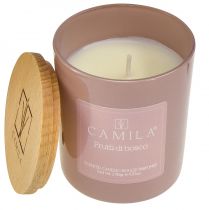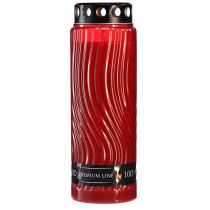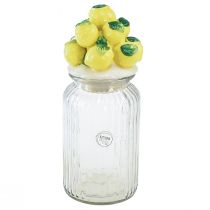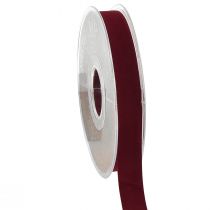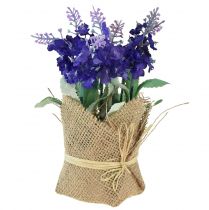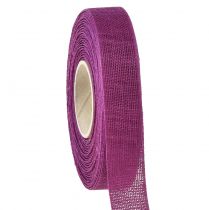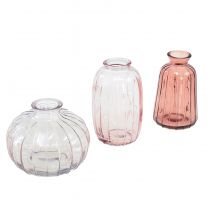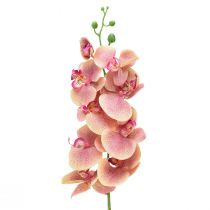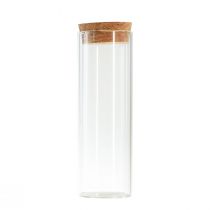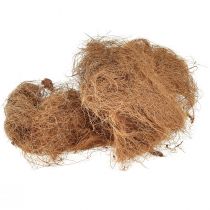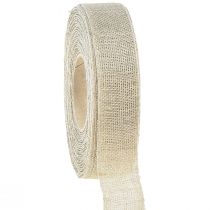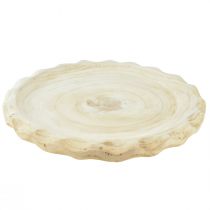Category: J like Jacaranda
Keywords: Jacaranda to jute
 The Jacaranda represents its own genus of plants with a few dozen species, all of which are counted among the trumpet tree plants. The idiosyncratic name refers to the shape of the flowers of the Jacaranda, which take on a particularly large and elegant shape and are reminiscent of the musical instrument of the same name. Even if Jacaranda is a classic wood that can be found in the wild, especially in South America, the wood of all types is hardly used economically. The trees are thus valued almost exclusively as an ornamental plant, which have a brilliant coloring of all flowers in a deep violet and in rare cases bloom white. The flowering itself only lasts two weeks, but is perceived as particularly impressive and ensures that the Jacaranda on the named continent is also cultivated intensively in the 21st century. The Jacaranda is not frost-free due to its origin and can therefore not be planted outdoors in Europe, although the genus is occasionally offered as a houseplant by specialist retailers. If there is an interest in acquiring Jacaranda, care should be taken to ensure that it is exposed to intense sunlight and that there is sufficient warmth throughout the year. An impressive floral display should not be expected here, since the jacaranda, kept as a houseplant, rarely develops its distinctive petals.
The Jacaranda represents its own genus of plants with a few dozen species, all of which are counted among the trumpet tree plants. The idiosyncratic name refers to the shape of the flowers of the Jacaranda, which take on a particularly large and elegant shape and are reminiscent of the musical instrument of the same name. Even if Jacaranda is a classic wood that can be found in the wild, especially in South America, the wood of all types is hardly used economically. The trees are thus valued almost exclusively as an ornamental plant, which have a brilliant coloring of all flowers in a deep violet and in rare cases bloom white. The flowering itself only lasts two weeks, but is perceived as particularly impressive and ensures that the Jacaranda on the named continent is also cultivated intensively in the 21st century. The Jacaranda is not frost-free due to its origin and can therefore not be planted outdoors in Europe, although the genus is occasionally offered as a houseplant by specialist retailers. If there is an interest in acquiring Jacaranda, care should be taken to ensure that it is exposed to intense sunlight and that there is sufficient warmth throughout the year. An impressive floral display should not be expected here, since the jacaranda, kept as a houseplant, rarely develops its distinctive petals.
 The jardiniere is a container for flowers that has taken on new forms over the decades and can be seen as the predecessor of the modern flower box or planter. In southwestern Germany, the term Jardiniere is still used today for a simple planter that can be hung on special brackets, for example on balconies or patios. The word itself comes from French and means something like gardener, the term is intended to indicate the freedom to use flowers and other plants in this plant bowl as easily as in a real garden. Before the Art Nouveau era, the jardiniere was an integral part of the interiors of upscale households, such as those fitted with real flowers or other artistic ornaments. At the turn of the century, and thus in the heyday of Art Nouveau, the jardiniere was filled with real flowers more and more, the compact shape of the bowl made it easy to transport around the home. At this time, the term Jardiniere also established itself for the so-called centerpiece, which could be found as an ornamental bowl on every bourgeois dining table and also offered an attractive place for plants of all kinds. Variants made of silver or other metals were particularly common in the original jardiniere; over time, simple and less elegant planters for the interior developed from this.
The jardiniere is a container for flowers that has taken on new forms over the decades and can be seen as the predecessor of the modern flower box or planter. In southwestern Germany, the term Jardiniere is still used today for a simple planter that can be hung on special brackets, for example on balconies or patios. The word itself comes from French and means something like gardener, the term is intended to indicate the freedom to use flowers and other plants in this plant bowl as easily as in a real garden. Before the Art Nouveau era, the jardiniere was an integral part of the interiors of upscale households, such as those fitted with real flowers or other artistic ornaments. At the turn of the century, and thus in the heyday of Art Nouveau, the jardiniere was filled with real flowers more and more, the compact shape of the bowl made it easy to transport around the home. At this time, the term Jardiniere also established itself for the so-called centerpiece, which could be found as an ornamental bowl on every bourgeois dining table and also offered an attractive place for plants of all kinds. Variants made of silver or other metals were particularly common in the original jardiniere; over time, simple and less elegant planters for the interior developed from this.
 The Judassilberling, also called one-year silver leaf or silver taler, is a belonging to the genus of silver leaves ornamental plant, which is native to Central Europe. It has its roots in southern Europe, but through targeted breeding in earlier centuries, the plant has become accustomed to the climate of Central Europe and is used with preferences in local horticulture and the design of parks and private gardens. Its name is misleading, as most species thrive for over two years, however, the plant only produces its herbaceous leaves in the first year, while it starts to flower in the following year. Most species produce large, mostly violet-colored petals, in rare cases, white petals are formed. The plant is suitable with its wild growth and herbaceous character both for the coverage of larger areas as well as a single ornamental plant, depending on the species of Judassilberling is up to one meter high. The flower of the plant takes place between April and June, the Judassilberling is very popular with many insects and thus finds a steady spread.
The Judassilberling, also called one-year silver leaf or silver taler, is a belonging to the genus of silver leaves ornamental plant, which is native to Central Europe. It has its roots in southern Europe, but through targeted breeding in earlier centuries, the plant has become accustomed to the climate of Central Europe and is used with preferences in local horticulture and the design of parks and private gardens. Its name is misleading, as most species thrive for over two years, however, the plant only produces its herbaceous leaves in the first year, while it starts to flower in the following year. Most species produce large, mostly violet-colored petals, in rare cases, white petals are formed. The plant is suitable with its wild growth and herbaceous character both for the coverage of larger areas as well as a single ornamental plant, depending on the species of Judassilberling is up to one meter high. The flower of the plant takes place between April and June, the Judassilberling is very popular with many insects and thus finds a steady spread.
 As Art Nouveau vase a special variant of flower vase is called, which carries floral motifs even on its outer surface. The vase takes its name from the epoch of Art Nouveau, which influenced architecture and art in Europe at the end of the 19th and the beginning of the 20th century and also influenced the design of numerous everyday objects. Even if the term Art Nouveau combines many artistic trends, the incorporation of floral elements in the facades of houses or objects of everyday life is one of the most striking features of this art movement. The application of flowers and flowers on vases was particularly close, because these vessels have been used for many centuries for decoration and offered space for the insertion of flowers. More than a century ago, the Art Nouveau vase is one of the most important ornaments of many households, and has become a real gem even without the use of flowers. Vases of well-known artists of the time are now more in European museums to discover, the interest in the distinctive Jugendstildesign has not diminished to this day and brings out again and again vases of this special kind. Art and design have also evolved to produce new vases that, despite their floral imprint, have little in common with the original Art Nouveau vases. Irrespective of this, floral ornate vases are particularly popular in the 21st century and can be discovered for example in the online offer of floristik21.de.
As Art Nouveau vase a special variant of flower vase is called, which carries floral motifs even on its outer surface. The vase takes its name from the epoch of Art Nouveau, which influenced architecture and art in Europe at the end of the 19th and the beginning of the 20th century and also influenced the design of numerous everyday objects. Even if the term Art Nouveau combines many artistic trends, the incorporation of floral elements in the facades of houses or objects of everyday life is one of the most striking features of this art movement. The application of flowers and flowers on vases was particularly close, because these vessels have been used for many centuries for decoration and offered space for the insertion of flowers. More than a century ago, the Art Nouveau vase is one of the most important ornaments of many households, and has become a real gem even without the use of flowers. Vases of well-known artists of the time are now more in European museums to discover, the interest in the distinctive Jugendstildesign has not diminished to this day and brings out again and again vases of this special kind. Art and design have also evolved to produce new vases that, despite their floral imprint, have little in common with the original Art Nouveau vases. Irrespective of this, floral ornate vases are particularly popular in the 21st century and can be discovered for example in the online offer of floristik21.de.
 The term Juniperus is the scientific term for the juniper, which must be counted among the most important and most common cypress family in this country. Around the world there are several dozen species of Juniperus, in Europe, the common juniper and the sweet tree are found primarily. The juniper is particularly popular because of its evergreen character and the high growth, which is why it can be optimally used in horticulture for the delimitation of land or for the bordering fields. Each Juniperus is a classic conifer that produces its cones in the form of small berries compared to other, native trees of this species. These are increasingly used today for the production of alcoholic beverages, known spirits such as gin or gin go with their basic taste on the aroma of juniper berries. Also in the medicine of earlier centuries, the juniper has played a remarkable role and was consumed as tea, which should have a positive effect on digestion. Today, the Juniperus is no longer used for its last effect, but as an ornamental plant it is one of the most important plants in Central Europe, as it is very easy to care for in comparison to other conifers. The rather barren shape of the conifer has made the juniper an appreciated plant in graveyard landscaping.
The term Juniperus is the scientific term for the juniper, which must be counted among the most important and most common cypress family in this country. Around the world there are several dozen species of Juniperus, in Europe, the common juniper and the sweet tree are found primarily. The juniper is particularly popular because of its evergreen character and the high growth, which is why it can be optimally used in horticulture for the delimitation of land or for the bordering fields. Each Juniperus is a classic conifer that produces its cones in the form of small berries compared to other, native trees of this species. These are increasingly used today for the production of alcoholic beverages, known spirits such as gin or gin go with their basic taste on the aroma of juniper berries. Also in the medicine of earlier centuries, the juniper has played a remarkable role and was consumed as tea, which should have a positive effect on digestion. Today, the Juniperus is no longer used for its last effect, but as an ornamental plant it is one of the most important plants in Central Europe, as it is very easy to care for in comparison to other conifers. The rather barren shape of the conifer has made the juniper an appreciated plant in graveyard landscaping.
 Jute is a fibrous material obtained from the bark of the corchrorus plant. This thrives in the natural environment, especially in the humid climate of Southeast Asia and offers with a height of several meters very long stems, which consequently produce a large amount of bast. Centuries ago, the bast fabric of these plants was used in Asia and a first predecessor of today called jute fabric, especially the robust and durable character of the material was appreciated. Jute is a pure natural fiber and thus a 100% biodegradable or recyclable product. For this reason, jute is now grown and processed industrially to a much greater extent, primarily for the production of environmentally friendly textiles. A private processing of jute fibers is rather uncommon in this country, but in industrial production jute plays an important role in Germany as well. Besides garments, it also produces composites and textile aids of all kinds for everyday use. Above all, the material is known by the slogan "jute instead of plastic", which is attributable to the environmental movement in the 1980s and referred to using an ecological carrying bag made of bast fabric instead of a plastic bag.
Jute is a fibrous material obtained from the bark of the corchrorus plant. This thrives in the natural environment, especially in the humid climate of Southeast Asia and offers with a height of several meters very long stems, which consequently produce a large amount of bast. Centuries ago, the bast fabric of these plants was used in Asia and a first predecessor of today called jute fabric, especially the robust and durable character of the material was appreciated. Jute is a pure natural fiber and thus a 100% biodegradable or recyclable product. For this reason, jute is now grown and processed industrially to a much greater extent, primarily for the production of environmentally friendly textiles. A private processing of jute fibers is rather uncommon in this country, but in industrial production jute plays an important role in Germany as well. Besides garments, it also produces composites and textile aids of all kinds for everyday use. Above all, the material is known by the slogan "jute instead of plastic", which is attributable to the environmental movement in the 1980s and referred to using an ecological carrying bag made of bast fabric instead of a plastic bag.
![]() The Jacaranda represents its own genus of plants with a few dozen species, all of which are counted among the trumpet tree plants. The idiosyncratic name refers to the shape of the flowers of the Jacaranda, which take on a particularly large and elegant shape and are reminiscent of the musical instrument of the same name. Even if Jacaranda is a classic wood that can be found in the wild, especially in South America, the wood of all types is hardly used economically. The trees are thus valued almost exclusively as an ornamental plant, which have a brilliant coloring of all flowers in a deep violet and in rare cases bloom white. The flowering itself only lasts two weeks, but is perceived as particularly impressive and ensures that the Jacaranda on the named continent is also cultivated intensively in the 21st century. The Jacaranda is not frost-free due to its origin and can therefore not be planted outdoors in Europe, although the genus is occasionally offered as a houseplant by specialist retailers. If there is an interest in acquiring Jacaranda, care should be taken to ensure that it is exposed to intense sunlight and that there is sufficient warmth throughout the year. An impressive floral display should not be expected here, since the jacaranda, kept as a houseplant, rarely develops its distinctive petals.
The Jacaranda represents its own genus of plants with a few dozen species, all of which are counted among the trumpet tree plants. The idiosyncratic name refers to the shape of the flowers of the Jacaranda, which take on a particularly large and elegant shape and are reminiscent of the musical instrument of the same name. Even if Jacaranda is a classic wood that can be found in the wild, especially in South America, the wood of all types is hardly used economically. The trees are thus valued almost exclusively as an ornamental plant, which have a brilliant coloring of all flowers in a deep violet and in rare cases bloom white. The flowering itself only lasts two weeks, but is perceived as particularly impressive and ensures that the Jacaranda on the named continent is also cultivated intensively in the 21st century. The Jacaranda is not frost-free due to its origin and can therefore not be planted outdoors in Europe, although the genus is occasionally offered as a houseplant by specialist retailers. If there is an interest in acquiring Jacaranda, care should be taken to ensure that it is exposed to intense sunlight and that there is sufficient warmth throughout the year. An impressive floral display should not be expected here, since the jacaranda, kept as a houseplant, rarely develops its distinctive petals. 